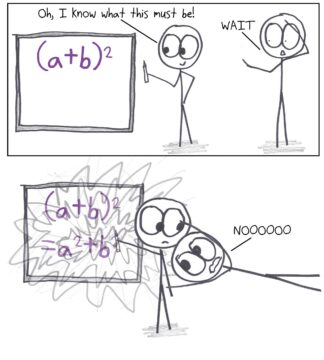Jennifer Ouellette at Ars Technica:
 Ars Technica: People who are not mathematically inclined usually see all those abstract symbols and their eyes glaze over. Let’s talk about the nature of symbols in math and why becoming more familiar with mathematical notation can help non-math people surmount that language barrier.
Ars Technica: People who are not mathematically inclined usually see all those abstract symbols and their eyes glaze over. Let’s talk about the nature of symbols in math and why becoming more familiar with mathematical notation can help non-math people surmount that language barrier.
Ben Orlin: It’s tricky. When I first became a teacher, I was mostly trying to push against students who’d only learned symbol manipulation procedures and didn’t have any sense of how to read and access the information behind them. It always mystified me: why do we teach that way? You end up with very bright, clever students, and all we’re giving them is hundreds of hours of practice in symbol manipulation. But what is a quadratic? They can’t really tell you.
One of the things I’ve gradually come to accept is that it’s almost baked into the language that mathematical notation has developed specifically for the purpose of manipulating it without thinking hard about it. If you’ve had the right set of experiences leading into that, that’s very convenient, because it means that when you sit down to solve a problem, you don’t have to solve it like Archimedes with lots of brilliant one-off steps where you just have gorgeous geometric intuition about everything. You can just be like, “Okay, I’m going to crank through the symbol manipulation procedures.” So there’s a real power in those procedures. They’re really valuable and important.
But if it’s all you have, then you’re doing a dance where you know the moves, but you’ve never heard the music.
More here.
Enjoying the content on 3QD? Help keep us going by donating now.
